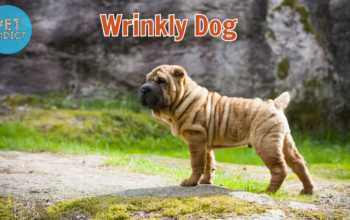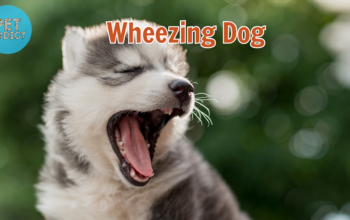Dog grooming plays a vital role in maintaining the health and appearance of our furry friends. Regular grooming sessions not only keep their coat clean and tangle-free but also promote good hygiene and prevent skin issues. When it comes to grooming, dog clippers are an essential tool for pet owners who prefer to trim their dog’s fur at home. In this comprehensive guide, we will outline everything you need to know about dog clippers, from choosing the right one to mastering the clipping technique.
PetAddict.net – The best place where you can find everything about your pet!
Understanding Dog Clippers
Dog clippers are specialized grooming tools designed specifically for cutting and trimming dog’s fur. Unlike human clippers, which are not suitable for the dense and varying coat types of dogs, dog clippers are equipped with sharper blades and more powerful motors to handle the task efficiently. They come in different types, including corded and cordless options, as well as models for professional or home use.
When selecting dog clippers, it’s essential to consider several factors. First, you should assess your dog’s breed and coat type to determine the appropriate clipper specifications. Different breeds may have different grooming needs, and certain coats may require specific blade types or motor power. Additionally, factors such as your budget, grooming experience level, and the frequency of grooming sessions should also be taken into account. Reading reviews and seeking recommendations from experienced groomers or veterinarians can further assist you in making an informed decision.
Choosing the Right Dog Clippers
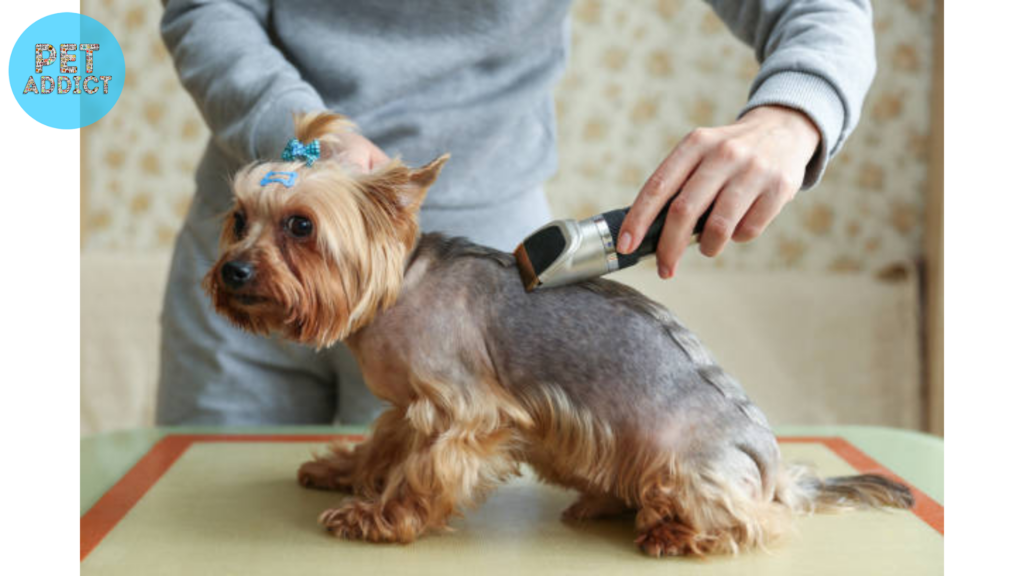
To ensure a successful grooming experience, it’s crucial to choose the right dog clippers for your furry companion. Consider the following steps when making your selection:
- Assess Your Dog’s Breed and Coat Type: Different dog breeds have different coat types, ranging from long and dense to short and smooth. Determine the characteristics of your dog’s coat, such as thickness, texture, and length, as this will help you select the most suitable clippers.
- Consider Your Requirements: Evaluate your grooming needs, including how frequently you plan to groom your dog and the level of detail you want to achieve. If you have multiple dogs or plan to groom professionally, investing in high-quality, durable clippers may be a wise choice.
- Research and Compare: Read product reviews and compare different models based on features, performance, and customer feedback. Look for clippers that have positive ratings for ease of use, durability, and comfort.
- Seek Recommendations: Consult with professional groomers or veterinarians who have experience with different dog clippers. They can provide valuable insights and suggest models that are suitable for your specific requirements.
Once you have chosen the right dog clippers, it’s essential to prepare your dog for the grooming session.
Preparing Your Dog for Clipping
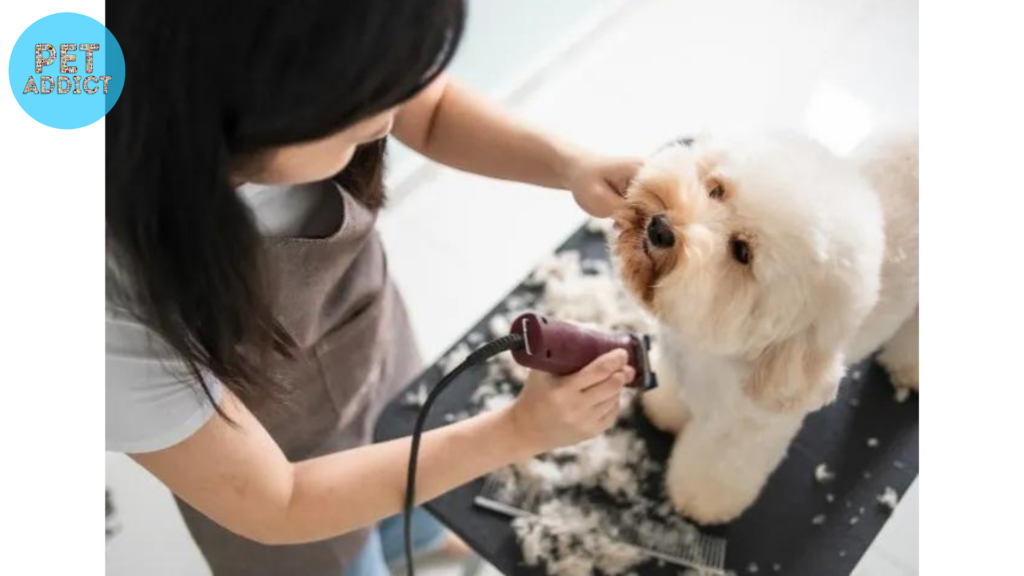
Proper preparation ensures a smoother and more comfortable grooming experience for your dog. Before starting the clipping process, follow these steps:
- Brushing and Detangling: Use a slicker brush or comb to remove any tangles or mats from your dog’s coat. This will prevent the clippers from getting stuck and causing discomfort to your dog.
- Bathing and Drying: Give your dog a thorough bath using a gentle dog shampoo. Dry your dog’s coat completely before clipping to avoid any slipping or discomfort during the process.
- Calming Techniques: If your dog is nervous or anxious about grooming, consider using calming techniques such as offering treats, playing soft music, or using aromatherapy diffusers. A calm and relaxed dog is more likely to cooperate during the clipping process.
Step-by-Step Guide to Clipping Your Dog
Now that you have prepared your dog, it’s time to start the clipping process. Follow these steps for a successful grooming session:
- Select the Appropriate Blade Length: Choose the blade length based on the desired length of your dog’s coat. Keep in mind that different areas of the body may require different blade lengths.
- Ensure a Comfortable and Safe Environment: Find a quiet and well-lit area to conduct the grooming session. Use a non-slip surface, such as a grooming table or rubber mat, to prevent accidents and provide stability.
- Hold the Clippers Correctly: Hold the clippers in a firm yet gentle grip, ensuring you have full control. Keep the blade parallel to the skin to achieve an even cut.
- Clip in the Direction of Hair Growth: Always move the clippers in the direction of your dog’s hair growth. This will result in a smoother finish and reduce the risk of skin irritation.
- Trim-Sensitive Areas: Pay extra attention when clipping sensitive areas such as the ears, paws, and tail. Use smaller and more precise blade attachments to achieve accurate trims.
- Dealing with Matted or Tangled Fur: If you encounter mats or tangles, use a comb or de-matting tool to gently loosen them before attempting to clip. Trying to clip through mats can be painful for your dog and may damage the clippers.
Remember to take breaks and provide treats or positive reinforcement throughout the grooming session to keep your dog engaged and cooperative.
Maintaining and Cleaning Dog Clippers
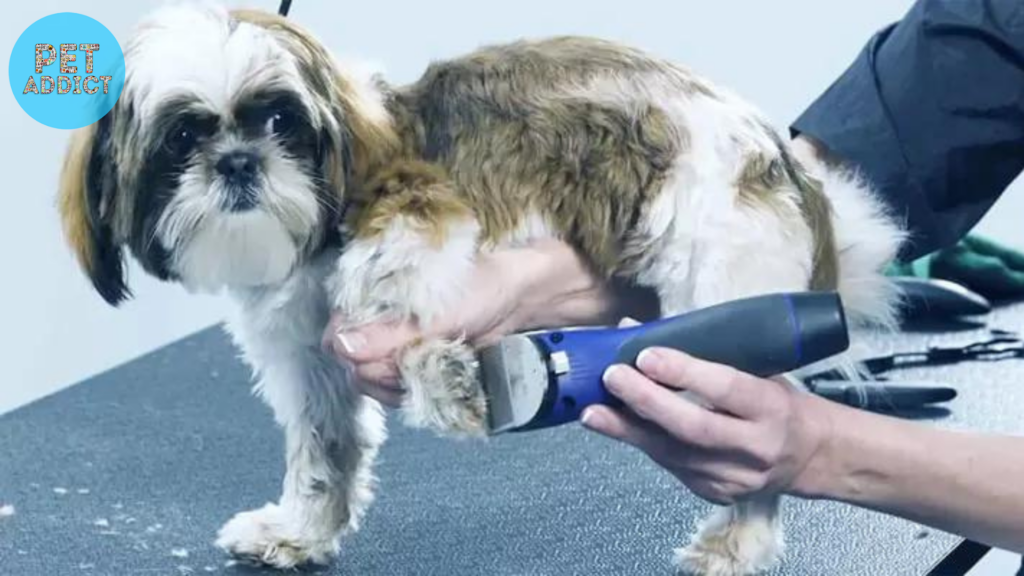
Regular maintenance and cleaning of your dog clippers are essential to ensure their longevity and optimal performance. Follow these steps for proper upkeep:
- Regular Maintenance: Check the clippers for any signs of wear or damage. Replace worn-out parts or blades as necessary. Keep the clippers properly lubricated with clipper oil to minimize friction and heat.
- Cleaning the Blades: After each use, remove any hair or debris from the blades using a brush or a blade-cleaning tool. Disinfect the blades with a suitable cleaning solution to prevent the spread of bacteria or infections.
- Storing the Clippers: Store the clippers in a clean and dry place, preferably in a protective case or pouch. This will prevent dust or moisture from damaging the clippers between uses.
Troubleshooting Common Issues
While grooming your dog, you may encounter a few common issues with the clippers. Here’s how to address them:
- Clippers Getting Hot or Noisy: If the clippers become hot or noisy during use, it could indicate a lack of lubrication or a dull blade. Apply clipper oil to the blades and consider replacing the blade if necessary.
- Blade Getting Stuck or Jammed: If the blade gets stuck or jammed, turn off the clippers and carefully remove any hair or debris causing the obstruction. Clean the blade thoroughly before continuing.
- Accidental Nicks or Cuts: In the event of an accidental nick or cut, apply gentle pressure with a clean cloth or tissue to stop any bleeding. Use a styptic powder or gel to aid in clotting if necessary. If the wound is severe, seek immediate veterinary attention.
Grooming Tips for Specific Breeds
Different dog breeds require specific grooming techniques. Here are a few tips for grooming specific types of coats:
- Long-Haired Breeds: Long-haired breeds, such as the Afghan Hound or Yorkshire Terrier, require regular brushing and detangling to prevent matting. Use longer blade attachments to maintain the desired length and trim around the ears, paws, and tail with extra care.
- Short-Haired Breeds: Short-haired breeds, such as the Boxer or Beagle, may not require frequent clipping. However, use shorter blade attachments to achieve a consistent and even coat length.
- Double-Coated Breeds: Double-coated breeds, such as the Siberian Husky or Golden Retriever, have a dense undercoat and longer guard hairs. Use specialized blades designed for double-coated breeds to avoid damaging the undercoat while removing excess fur.
Safety Precautions and Risks
While grooming your dog at home can be a rewarding experience, it’s essential to prioritize safety and minimize any potential risks. Consider the following precautions:
- Avoiding Injuries During Clipping: Take extra care when clipping sensitive areas, such as near the eyes or genitals. Keep your dog’s skin taut to prevent accidental nicks or cuts.
- Recognizing Signs of Discomfort or Stress: Watch for signs of discomfort, such as excessive panting, whimpering, or attempting to escape. If your dog shows signs of stress, take a break and reassess the situation. It’s crucial to prioritize your dog’s well-being and comfort throughout the grooming process.
- Knowing When to Seek Professional Help: If you encounter challenges or your dog has specific grooming requirements that you’re unsure about, it’s best to seek professional help. Professional groomers have the experience and expertise to handle various coat types and can ensure a safe and satisfactory grooming experience for your dog.
Frequently Asked Questions (FAQs)
FAQ 1: Can I use human clippers on my dog?
It’s not recommended to use human clippers on dogs. Human clippers are not designed to handle the varying coat types and density of a dog’s fur. Dog clippers have sharper blades and more powerful motors to provide a clean and efficient cut.
FAQ 2: How often should I clip my dog’s fur?
The frequency of clipping depends on your dog’s breed, coat type, and personal preference. Some breeds require regular clipping every 4-6 weeks, while others may only need occasional trims. Consult breed-specific grooming guidelines or seek advice from a professional groomer to determine the ideal grooming schedule for your dog.
FAQ 3: Can I use dog clippers on a cat?
No, dog clippers should not be used on cats. Cats have different coat structures and are more sensitive to clipping. It’s best to use specialized clippers designed for cats to ensure their safety and comfort.
FAQ 4: What should I do if my dog gets scared during grooming?
If your dog gets scared or anxious during grooming, try using positive reinforcement techniques such as treats, praise, or breaks to calm them down. Additionally, consider using grooming tools with quieter motors or seek assistance from a professional groomer who can handle anxious dogs.
FAQ 5: Are there any specific techniques for grooming puppies?
When grooming puppies, it’s essential to introduce them to the grooming process gradually and make it a positive experience. Start with short sessions, use treats for positive reinforcement, and ensure a calm environment. Puppies may be more sensitive, so use caution and gentle handling during clipping.
In conclusion, dog clippers are a valuable tool for pet owners who prefer to groom their dogs at home. By understanding the different types of clippers, selecting the right one, and following proper grooming techniques, you can maintain your dog’s coat and overall hygiene effectively. Remember to prioritize your dog’s comfort and safety throughout the grooming process. If you encounter challenges or have specific concerns, always consult with professional groomers or veterinarians for guidance.


